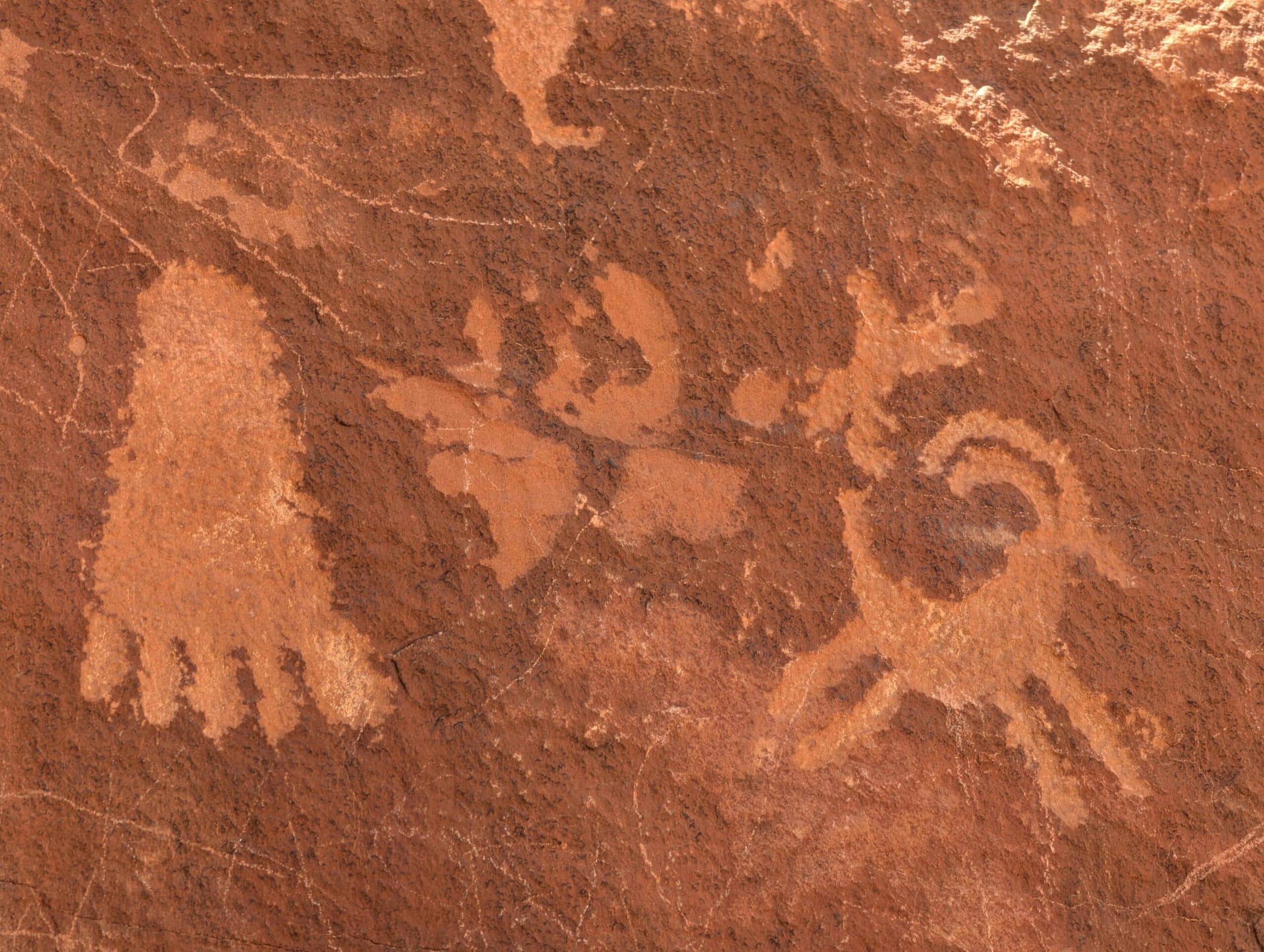


Central Question: How did a history of anti-Semitism in Europe make the Holocaust possible?
The word “anti-Semitism” means prejudice against or hatred of Jews. The Holocaust, the state-sponsored persecution and murder of European Jews by Nazi Germany and its collaborators between 1933 and 1945, is history’s most extreme example of anti-Semitism. Anti-Semitism has a long history in Europe, dating all the way back to the medieval era and early Christian church. This deep, culturally entrenched hatred of Jews in Europe made the Nazi’s scapegoating and vilifying of Germany’s Jews much easier for many Germans and Europeans, in general, to accept and support.
For more background, read “Anti-Semitism” on the U.S. Holocaust Memorial Museum website.
Scholars understand and can fluently use the following Unit 1 Key Terms:
Scholars understand the history of European anti-Semitism and can explain how it enabled German scapegoating and attacks on Jewish Europeans, which made the Holocaust possible.
Preparation
Launch (2 minutes)
Examine (8 minutes)
Discuss (5 minutes)
Watch (14 minutes)
Discuss (6 minutes)
Homework
Central Question: Why did Germans vote for the Nazi Party?
Following the Treaty of Versailles, the German economy struggled; reparations and the cost of repairs within the country were a huge financial burden. Already flailing in the 1920s, the German economy completely collapsed following the Wall Street crash in 1929. Inflation rose exponentially, and unemployment rates skyrocketed. Yet while many Germans suffered, the Jewish community remained relatively prosperous. With anti-Semitism on the rise, many Germans looked to blame the Jews as the source of their economic problems. The National Socialist Party (the Nazi Party) was founded in 1920 on the principles of German nationalism, economic recovery, prejudice, and anti-Marxism. With a growing national climate of frustration and anger, the Nazi Party faced a perfect opportunity to gain political control. Whereas in 1928 they had only 12 seats in the Reichstag, after the 1932 election they had 230 seats, becoming the largest and most powerful political party.
For more background, read “The Treaty of Versailles” on the U.S. Holocaust Memorial Museum website and “Germany: Years of Crisis, 1920–23” on the Encyclopedia Britannica website, and review “The Rise of the Nazi Party” timeline on the University of South Florida website.
Note: This simulation was adapted from the U.S. Holocaust Memorial Museum lesson plan “Why Did Germans Vote for the Nazi Party?”
Scholars understand and can fluently use the following Unit 1 Key Terms:
Scholars understand the political, social, and economic conditions of Depression-era Germany and can explain how different political parties responded to these conditions in the 1932 election.
Launch (2 minutes)
Discuss (5 minutes)
Homework
Central Question: Why did European leaders appease Nazi aggression?
Although the results of the July 1932 elections demonstrated substantial support for the Nazis, the Nazis still did not have universal support. Hitler, the leader of the Nazi Party, had twice run for president— and lost both times. However, in 1932, with the Nazi Party receiving more votes than any other party, Hitler pressured the German president, Paul von Hindenburg, to appoint him as Chancellor and Head of the Reichstag. Less than two years later, with the support of 90 percent of the electorate, Hitler declared himself Führer and announced the beginning of Germany’s Third Reich. Once in control, Hitler used propaganda to promote German nationalism and to demonize the Nazi Party’s enemies, especially Jewish Germans. He also ushered in an era of totalitarianism and aggressive military conquest.
Germany’s aggressive military expansion violated the terms of the Treaty of Versailles, which had broken apart Germany’s empire and forbade future attempts at empire building both as punishment for World War I and as an attempt to maintain peace. Yet as Hitler led German military conquests, the leaders of Western Europe, most famously Neville Chamberlain of Great Britain, did nothing in the hopes of avoiding war through a policy of appeasement.
For more background, read “German Prewar Expansion” on the U.S. Holocaust Memorial Museum website and “Chamberlain and Appeasement” on the BBC website, and watch “Nazi Aggression and Appeasement” on the Khan Academy website.
Scholars understand and can fluently use the following Unit 1 Key Terms:
Scholars understand the increasing power of Nazi Germany and can explain why European leaders appeased Nazi aggression.
Launch (2 minutes)
Watch (4 minutes)
Discuss (4 minutes)
Homework
Central Question: To what extent did Americans support entry into World War II?
When Germany invaded Poland on September 1, 1939, it was the last straw for Western European appeasement. Great Britain and France declared war on Germany, launching World War II. Following the outbreak of war in Europe, many Americans believed that isolation, especially after the devastation of World War I, was the correct course, despite the injustices happening abroad.
For more background, read “The Debate Behind American Intervention in World War II” on the Atlantic website and “American Isolationism in the 1930s” on the U.S. State Department’s history website, and watch “Charles, Lindbergh, the Nazis, and American Isolationism” on the BBC website.
Scholars understand and can fluently use the following Unit 1 Key Terms:
Scholars understand what isolationism is and can articulate arguments for and against American isolationist policy during World War II.
Launch (2 minutes)
Examine (5 minutes)
Discuss (3 minutes)
Teacher Feedback Guidance
Central Question: To what extent did Americans support entry into World War II?
Scholars revise their Exit Tickets based on individualized teacher feedback to make their essays stronger and clearer and to understand how to use their feedback to grow as writers.
Preparation
Homework
Teacher Feedback Guidance
Central Question: Why did the United States join World War II?
In 1936, Nazi Germany signed treaties with Italy and Japan, establishing initial military alliances. On September 27, 1940, the three nations came together to sign the Tripartite Pact, establishing the Axis Alliance. At first, the United States refused to join the war. Isolationism was stronger than ever, despite some Americans’ fears of the power of Nazi Germany. On December 7, 1941, Japanese fighter planes attacked an American naval base at Pearl Harbor in Honolulu, Hawaii. More than 2,000 American soldiers and sailors died in the attack. The next day, Congress declared war on Japan, and the United States joined World War II. Until the war’s end in 1945, World War II was fought throughout Europe, North Africa, the Middle East, Southeast Asia, and the Pacific.
For more background, read “World War II in Europe” on the U.S. Holocaust Memorial Museum website and “Pearl Harbor: A Rude Awakening” on the BBC website.
Scholars understand and can fluently use the following Unit 1 Key Term:
Scholars understand the events of Pearl Harbor and can explain the factors that sparked the United States’ entry into World War II.
Launch (2 minutes)
Watch (4 minutes)
Discuss (4 minutes)
Homework
Central Question: Why were Japanese Americans interned during World War II?
The attack on Pearl Harbor was a shock in the United States, and many Americans feared that Japanese espionage within the country was behind the attack. On February 19, 1942, President Roosevelt issued Executive Order 9066, calling for the deportation and incarceration of all people of Japanese descent, forcing them to live in government internment camps. Many of those interned were American citizens whose families had been living in the United States for 100 years. More than 110,000 people lived in these camps until June 30, 1946, almost one year after the war ended.
For more background, browse the PBS Internment History website and read “The Tragedy of Japanese Internment” on the Gilder Lehrman Institute of American History website (free login required).
Scholars understand and can fluently use the following Unit 1 Key Terms:
Scholars understand the justifications used for Japanese internment and can explain why the United States interned Japanese Americans during World War II.
Launch (2 minutes)
Watch (9 minutes)
Discuss (4 minutes)
Homework
Central Question: To what extent were the experiences of soldiers on each front of World War II similar?
When Germany invaded Poland on September 1, 1939, it was the last straw for Western European appeasement. Great Britain and France declared war on Germany, launching World War II. Two years later, the United States joined the war following the Japanese attack on Pearl Harbor. Until the war’s end in 1945, World War II was fought all over the world: Throughout Europe, North Africa, the Middle East, Southeast Asia, and the Pacific, many lives were touched both on and off the battlefield.
For more background, browse the World War II history section of the BBC website and “The Perilous Fight: America’s World War II in Color” on the PBS website.
Scholars understand the course of the war and can explain how soldiers’ experiences on each front were both similar and different.
Preparation
Launch (2 minutes)
Watch (3 minutes)
Discuss (5 minutes)
Homework
Central Question: How did World War II affect American life on the home front?
After the December 7, 1941, Japanese attack on the American naval fleet at Pearl Harbor, in Hawaii, the United States was thrust into World War II, and everyday life across the country was dramatically altered. Food, gas, and clothing were rationed. Communities conducted scrap metal drives. To help build the armaments necessary to win the war, women found employment as electricians, welders, and riveters in defense plants. Japanese Americans had their rights as citizens stripped from them. People in the United States grew increasingly dependent on radio reports for news of the fighting overseas. And while popular entertainment served to demonize the nation’s enemies, it was also viewed as an escapist outlet that allowed Americans brief respite from war worries.
For more background, read “World War II Posters on the American Home Front,” “The World War II Home Front,” and “Black Soldiers in the Second World War” on the Gilder Lehrman Institute of American History website (free login required).
Scholars understand and can fluently use the following Unit 1 Key Term:
Scholars explore the American home front during World War II and can explain how World War II affected American life on the home front.
Preparation
Launch (2 minutes)
Watch (3 minutes)
Discuss (5 minutes)
Homework
Central Question: How did the Holocaust devastate the lives of people across Europe?
The rise of anti-Semitism in Germany laid the groundwork for the Holocaust. Between 1939 and 1941 in Nazi-occupied countries, Jewish people, as well as many other marginalized groups, were rounded up into ghettos and eventually sent to concentration and death camps. During the Holocaust, 6 million Jews and another 6 million other people (Roma gypsies, disabled people, Communists, homosexuals, etc.) were killed in Nazi death camps as part of the Nazi’s “Final Solution.” The horrific life in ghettos and concentration camps devastated the Jewish communities of Europe and tore families and loved ones apart.
For more background, read the articles and guidelines on teaching about the Holocaust on the U.S. Holocaust Memorial Museum website.
Scholars understand and can fluently use the following Unit 1 Key Terms:
Scholars understand the stories of victims of the Holocaust and can explain how the Holocaust affected the lives of people across Europe.
Preparation
Launch (2 minutes)
Watch (14 minutes)
Discuss (4 minutes)
Homework
Central Question: How did the U.S. response to the Holocaust evolve over time?
People around the world responded in different ways to the horrors of the Holocaust. Many international communities claimed they did not know the extent of the Holocaust and thus did not intervene sooner. In some cases, individuals within and outside of the Jewish community around the world risked their lives to resist the Nazis and save Jews. In other cases, individuals and even nations turned a blind eye. For example, when the ship the St. Louis, carrying nearly 1,000 Jewish refugees, was turned away from Cuba, President Roosevelt refused to let these refugees into the United States, and their boat was forced to return to Europe. Americans had access to reliable information about the Nazi regime’s persecution of Jews as it happened, but most could not imagine that a mass murder campaign was possible. Although many Americans sympathized with the plight of European Jews, assisting refugees and rescuing the victims of Nazism never became a national priority.
For more background, read these articles on “Rescue and Resistance” and “The United States and the Holocaust” on the U.S. Holocaust Memorial Museum website.
Scholars understand and can fluently use the following Unit 1 Key Terms:
Scholars understand the U.S. response to the Holocaust and the impact of action — and inaction — on the victims of the Holocaust and can explain how the U.S. response evolved over the course of the war.
Launch (2 minutes)
Read (5 minutes)
Discuss (3 minutes)
Watch (16 minutes)
Discuss (9 minutes)
Homework
Central Question: How did the Allies defeat the Nazis?
In the summer of 1944, the Allies launched their D-Day invasion in Normandy, France. The invasion began on June 6, 1944, and was a resounding success, leading to an Allied victory. By August of that year, France was liberated from Nazi control, and the Nazi stronghold in Western Europe was beginning to crumble. In July, Soviet troops discovered and liberated the Majdanek Concentration Camp in Poland.
For more background, read “The Normandy Invasion” on the Encyclopedia Britannica website, “African American Heroism on the Beaches of Normandy” and “D-Day” on the Gilder Lehrman Institute of American History website (free login required), and “The Liberation of Nazi Camps” on the U.S. Holocaust Memorial Museum website.
Scholars understand and can fluently use the following Unit 1 Key Terms:
Scholars understand the events at the end of World War II and can explain how the Allies were able to defeat the Nazis.
Preparation
Launch (2 minutes)
Listen (3 minutes)
Discuss (5 minutes)
Discuss — 5 minutes
Homework
Central Question: Should the United States have dropped the atomic bomb on Japan?
By 1945, the war was going badly for the Axis Powers. On April 28, Benito Mussolini was assassinated; on April 29, German forces surrendered (effective on May 8); and on April 30, Adolf Hitler committed suicide. However, despite an aggressive campaign in the Pacific, the Japanese refused to surrender. On August 6 and 9, the United States dropped two atomic bombs on the Japanese cities of Hiroshima and Nagasaki. On August 15, the Japanese surrendered. Initially, almost 250,000 Japanese were killed by the bombs, but the aftereffects of the radiation continued to harm survivors for years to come.
For more background, read “Atomic Bomb History” on the History Channel website and “The Manhattan Project and the Atomic Bomb” on the Khan Academy website.
Scholars understand and can fluently use the following Unit 1 Key Term:
Scholars understand arguments for and against the United States’ use of the atomic bomb in World War II and can express one of these arguments in a class debate.
Preparation
Launch (2 minutes)
Discuss (3 minutes)
Homework
Teacher Feedback Guidance
Central Question: Should the United States have dropped the atomic bomb on Japan?
Scholars revise their Exit Tickets based on individualized teacher feedback to make their essays stronger and clearer and to understand how to use their feedback to grow as writers.
Preparation
Homework
Teacher Feedback Guidance
*To access all articles on the Newsela website, you must create a free Newsela account.
*To access all articles on the Newsela website, you must create a free account.
Prompts: Scholars may choose one of the following prompts about Big Ideas in American history.
Project Menu: Scholars may then choose to respond to the prompt chosen above with one of the formats outlined below.
resources
Access a wide array of articles, webinars, and more, designed to help you help children reach their potential.
Curated Middle School Novel List (Grades 5-8)
Educator
Parent
Book lists
Book Lists
Middle School
5th
6th
7th
8th
Literacy

ES PBL Grade 2: Brooklyn Bridge
Educator
Curriculum
Elementary School
2nd
PBL

ES PBL Grade 3: Iroquois and Lenape
Educator
Curriculum
Elementary School
3rd
PBL

Grade 1: PBL School – How It Works!
Educator
Curriculum
Elementary School
1st
PBL
NEWSLETTER
"*" indicates required fields
